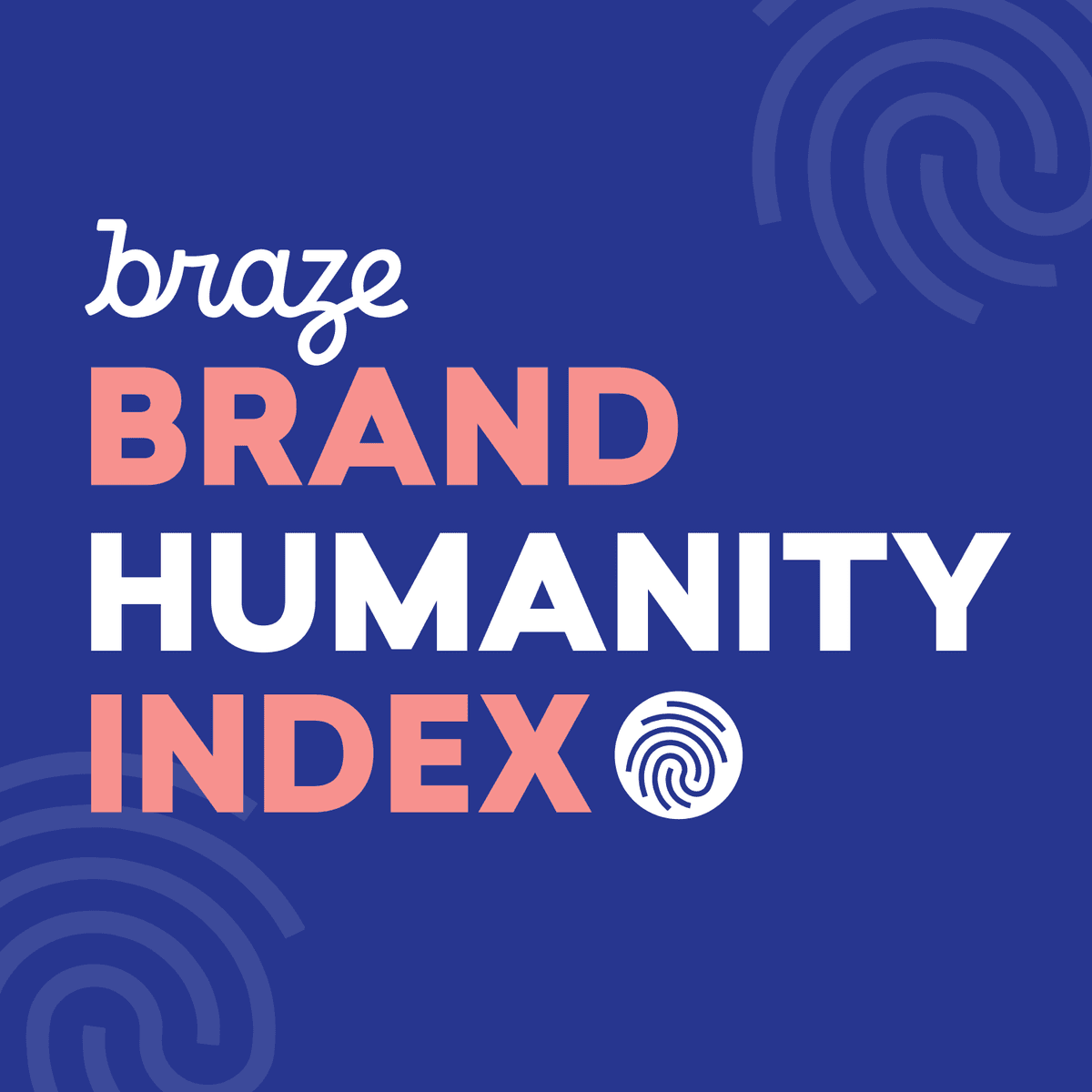The Humanity Difference: Introducing the Braze Brand Humanity Index
Published on October 31, 2018/Last edited on October 31, 2018/6 min read


Kelsey Cottingham
Editor, Content Marketing at BrazeWell, that cat’s out of the bag. At LTR 2018, we announced a new, precedent-setting piece of commissioned research, conducted by Forrester Consulting on behalf of Braze. We call it the Braze Brand Humanity Index. Introducing the study was Vice President and Principal Analyst at Forrester Research, Dipanjan Chatterjee, along with Braze President and Chief Customer Officer, Myles Kleeger.
The session opened with Kleeger reminding the audience of the conference’s theme for the year, “The Human Factor.” He continued to harken back to Braze’s mission from day one: humanizing relationships between people and brands. “It’s what our product is built to do. It’s what our teams are trained to do. It’s at the center of every decision we make as a company,” Kleeger mused.
But where did this mission come from? In a way, it’s intuitive. We’re humans, too, after all. We experience customer engagement marketing as consumers every single day. We know what resonates with us—that people respond better to brands that know them as individuals. “We’re customers, just like your customers, and we know how we like to be spoken to by the brands that we do business with,” Kleeger emphasized. What we didn’t have? Data telling us why. Until now, that is.
The Braze Brand Humanity Index is based on research identifying what attributes make a brand feel human to customers, as well as the business impact of that Brand Humanity. Chatterjee took the stage to dive into the findings of the study, and to explain to the audience why research like this is so important given the state of the market. He explained, “We have consumers who are now empowered with information...We call it the age of the customer. It’s a shift—it’s a migration of information away from the walled boundaries of brands to a much more democratic consumer.” He continued to say that consumers no longer want to be spoken to by brands; they want to converse with brands and among one another. And they want to do it through digital media.
What we’ve found is that, to be effective as brands, we need to converse with people in a manner that stimulates their emotions. We need to be more human. But we’re also in the midst of a digital revolution, a time when there are more devices than human beings on the planet. So we have to be more human, through more machines. With machines as our medium whether we like it or not, the onus is on marketers to invent a new style of communication.The Brand Humanity Index helps us to understand how and why we do that.
The critical marketing takeaway? Exhibiting human communication has a tangible impact for your business. For example, we found that consumers who perceive your brand as human are 2.1x more likely to love the brand and 1.9x more likely to be satisfied by it. Similarly, consumers who perceive a brand as human are 1.6x more likely to purchase from that brand and 1.8x more likely to recommend it. Dipanjan states, “We know that word of brand pales in comparison to word of mouth, but what if word of brand could stimulate word of mouth?” When your brand’s communication is able to inspire customer loyalty and brand advocacy that fills up the top of your funnel with new customers—that’s powerful.
We know that word of brand pales in comparison to word of mouth, but what if word of brand could stimulate word of mouth?
Dipanjan Chatterjee
So, what does it mean to be human? We asked over 3,000 consumers globally to think of a recent experience with a brand, tell us whether the interaction felt human, then to rate a list of functional and emotional attributes based on how well they aligned with that experience. Chatterjee explained, “For every human interaction, we dissected the data and stitched it back together to see if we could find themes that represented humanity.” Here’s a glimpse at what we uncovered:
- 36% of brand humanity stems from brands using natural communication: They speak like a regular person, in a tone that resonates with customers, and in a manner that is clear and understandable.
- 33% of brand humanity comes from activating emotions in your customers. Emotional attributes that were most important to consumers were: responsive, social, friendly, thoughtful, and helpful, in rank order. This challenges popular notions of branding—that good branding means differentiation above all. Forrester’s research indicates that it’s less about differentiation, and more about being an ally to your customers. Simply helping customers out as you would for a friend can activate the emotions that signal brand humanity.
- 31% of brand humanity comes from being perceived as personal and considerate. This means that customers feel like your brand knows them. Your messaging is personal, you understand what matters to in the moment, and because of that, you’re able to make great recommendations for them and avoid things they don’t like.
Dipanjan left the audience with three guidelines on the road toward greater Brand Humanity: mindset, machines, and measurement.
“Remember, at the other end of the device is a human being, with her hopes and aspirations, with her trials and tribulations…” Chatterjee began, “[Human beings] are biologically wired for empathy. It is your responsibility, then, to go back to your organization full of people who are wired for empathy to connect the synapses, to make sure that you have an organization that is ready to be empathetic. Because if not, then nothing else matters. First things first. You need empathy.”
Chatterjee acknowledged that machines have not yet been able to recreate empathy, but they are able to process massive amounts of data—all at scale. “When you put together the power of machines with the power of humans, you’ve amped up the value of your brand.”
When you put together the power of machines with the power of humans, you’ve amped up the value of your brand.
Dipanjan Chatterjee
Lastly, you need to measure your results so that you can be constantly growing and learning as a team. The technology stack, the right mindset, and measurement tools like the Brand Humanity Index will make you “a little bit smarter, will make life a little bit easier, and make things a little bit more effective for your brand.”
Interested in the Braze Brand Humanity Index? This is just the beginning. Read the full study from Forrester Consulting to gain valuable insights about how Brand Humanity will impact your business and to get tangible takeaways from executives at top global brands.
Related Tags
Be Absolutely Engaging.™
Sign up for regular updates from Braze.
Related Content
View the Blog
The new inbox reality: How iOS changes are reshaping email marketing

Aparna Prasad

Experience optimization: Turning data insights into better journeys

Team Braze

December 2025 Bonfire Marketer of the Month: Jagex’s Emma Oliver
